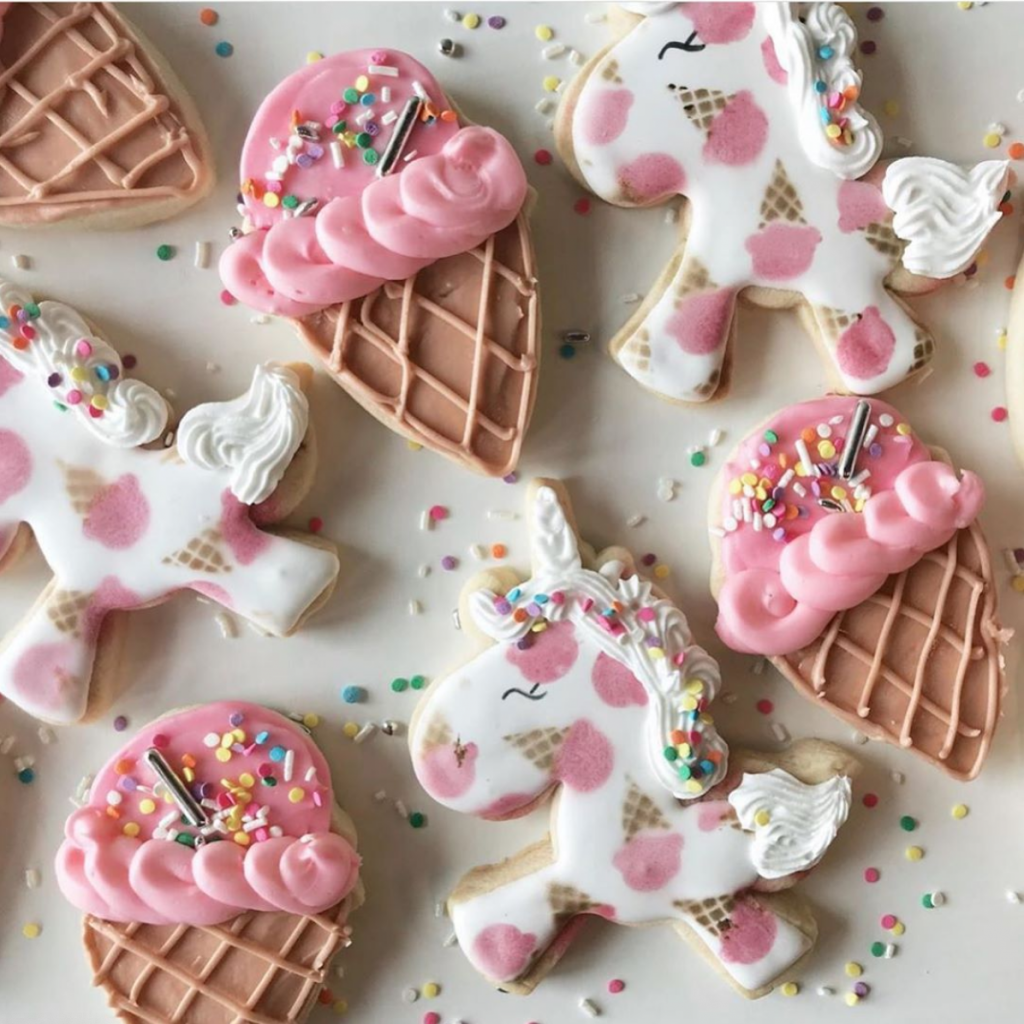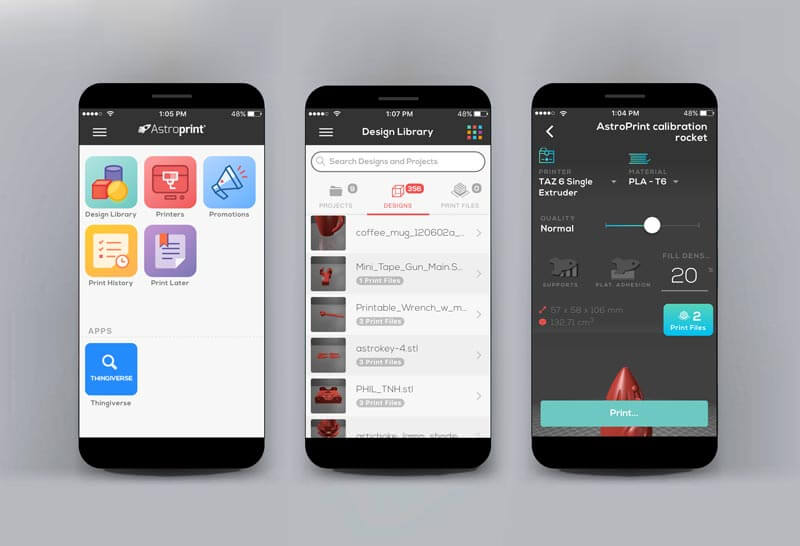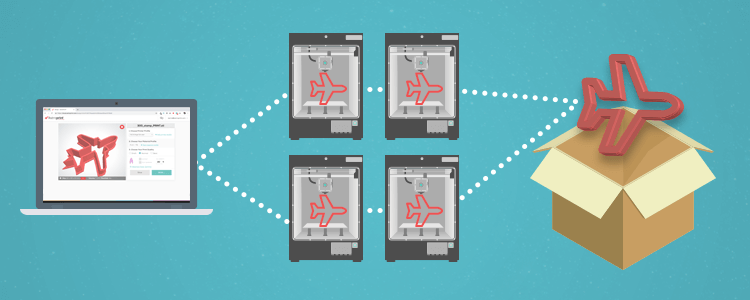Since we print on demand, we can sell zero of a design and it doesn’t cost us anything other than my wife having fun sketching it. If I put a product online and it doesn’t sell, we don’t lose anything.
Mike Benner
Mike and his wife Shey are the founders of Sheyb, an online store where people can find custom 3D printed cookie cutters. They make their own designs and print them on demand. Currently, they have a farm of 30+ printers and their business keeps growing.
In this interview, Mike tells us about:
- How they started their 3D printing cookie business.
- How they manage and monitor their 3D printer fleet.
- How they leverage social media to drive sales.
- Where Mike sees other business opportunities for 3D printing entrepreneurs.
How did you get started?
“I work with a coworking space and I run a software company out of there. One day we bought one of the first wooden 3D printers and we started tinkering with it. At that time, my wife was decorating cookies for corporate events and one night she was up working at 2am because she had to hand cut all these logos, so told her: well, why don’t we just 3D print one? And it kind of clicked.
I 3D printed her a couple of cutters and she started using them. Then all her cookie friends asked if we could make some for them. So we started giving away cookie cutters until we got to the point where I could never use the 3D printer for myself! My wife decided that if we were going to buy another 3D printer then we had to start selling those cutters.”

Tell us about your 3D printing workflow
“My wife sketches the design on a Surface Book, then she sends me a file, which is basically a silhouette, and a software program converts that automatically into an STL file. Then we upload that STL file to the AstroPrint cloud where all our slicing profiles are set up. Next, from our phone or laptop we can just click it and print it.
We have 7 STL files for every cutter design (for different sizes), and for every printer we have at least one if not two slicing profiles. We have a 32″ widescreen monitor that pulls out two things: AstroPrint and Shopify, so we know what orders we have to print and what printers we need to print them on. My wife uses the AstroPrint phone app to get notified when prints are done. She loves it.”

What 3D printers do you use?
“We have three gMax printers for large cookie cutters and for bulk printing, and 27 printers from MakerToolWorks.
We’ve also tried with some low-cost Chinese printers. The problem is when they are running 24/7 they break a lot so we’ve come to the conclusion that if you don’t spend $1.500 or more on a 3D printer, the quality is garbage and maintenance becomes a nightmare. With printers in the higher end of the hobbyist side, we replace wheels occasionally and nozzles as they wear out but that’s about it. Every three months we do full breakdown maintenance on every printer and that seems to be working really well for us.
The only time where we have issues is when the weather changes. We are in Phoenix where summers are hot and humid which affects the printers, causing jamming. We are now going through the process of updating our slicing profiles in the AstroPrint for the summer season.”
Who takes care of what in the business?
“I deal with the technical side of the business. My wife sketches all the designs and takes care of marketing, community engagement, etc. We have a part-time employee that helps us with maintenance of the printers, assembly, etc, and another part-time person that helps us with packaging and other stuff.”
How do you find customers?
“Most of it started with building community on Facebook and Instagram. Also, my wife gives influencers free cookie cutters for them to try. She doesn’t ask anything in exchange but they all love them, and then they talk about it. Now, we have over 40k followers on Instagram and at this point, my wife is well known in the community. I have to give my wife credit for this because the business wouldn’t be where it is if it wasn’t because of her.
Her designs are one thing because she hands design everything. But she is also really good at engaging with the community. She is constantly talking to people. She reposts every time someone tags her on a photo where they decorated a cookie using our cutters. She even started doing blog interviews with other people, sometimes our own competitors. She basically engages with people and tries to collaborate on as many things as possible and that’s a big driver for the business.”
Could you have done this without 3D printing?
“We would never have done this without 3D printing. There is no way because we would have had to literally narrow it down to 20 designs, pay $20,000+ to have them all injection molded, cross our fingers, and hope for the best.
Since we print on demand I can sell zero of a design and it doesn’t cost me anything other than my wife having fun sketching it. If I put a product online and it doesn’t sell, we don’t lose anything.
We also have things like wedding stamp cutters, where you can put in your initials and wedding date which is something that you could never injection mold. People pay four times more for these cutters because they can’t find them anywhere and our cost is the same. To me, this is an example where 3D printing will always dominate.”
Do you use third party marketplaces to sell your products?
“No. We just use our own Shopify store even when we take wholesale orders. When a physical store buys 300 or 400 cutters from us, they buy them through our online store, we just give them a discount code.”
Where do you see other market opportunities to 3D print end products?
“I’m actually helping one of our employees who has a really cool product idea that is totally made for 3D printing. It’s called candoables. One day she was at a friend’s house who is blind and she was watching him trying to cook, fumbling around and putting things where they didn’t belong. So she came up with this idea of a ring that would snap on, for example a can of corn, and on the outside there is braille that says “corn”.
I’m also starting to see a lot of miniature and figurine modeling. I see some designers focusing on printing miniatures for games. Alexa cases is another one. They hold your Alexa and plug it into the wall. You could 3D print this and put whatever you want on it. So you could have different designs for each room, like monster trucks for your little boy.
My wife is also interested in 3D printed nightlights. For example, doing different 3D designs with the light inside that gives you a nice glow or a nice effect on the ceiling. Like doing mushroom shapes and having the lighting come through the holes on the top, or being able to put the kid’s name on the base of it. But really, I think there are opportunities with anything that you can injection mold. With 3D printing, you can customize it and not carry inventory”
How to Start a 3D Printing a Business
If you have a 3D printer and you know how to use 3D software you can make a cookie cutter. But Sheyb’s secret sauce is not about printing cutters, it’s about community engagement and their attention to detail. Most people that get into 3D printing are rather technical and usually they don’t spend the time engaging with potential customers and marketing their products. The combination of Mike’s technical skills with Shey’s creativity and communication skills make a perfect blend for this type of business.
Another big takeaway from this interview is that 3D printing businesses need a completely different approach than traditional businesses. 3D printing can be a huge advantage. It is far easier to sell products to existing customers than to someone you don’t have a relationship with. With 3D printing this is key because selling 100 different designs cost you the same as selling 100 units of the same design, which allows you to offer all kinds of custom products to your clients.
In the case of Sheyb, one cutter can make 1000’s of cookies. This means most customers only need one cutter per design, and have come to Sheyb with the intention of only getting one cookie cutter total. However, thanks to the extensive variety of designs and their fantastic community engagement, many of these customers end up buying a variety of designs and become customers for life.
If you found Mike’s interview inspiring. Check out our post on How to Start an e-commerce Business with 3D Printers.


